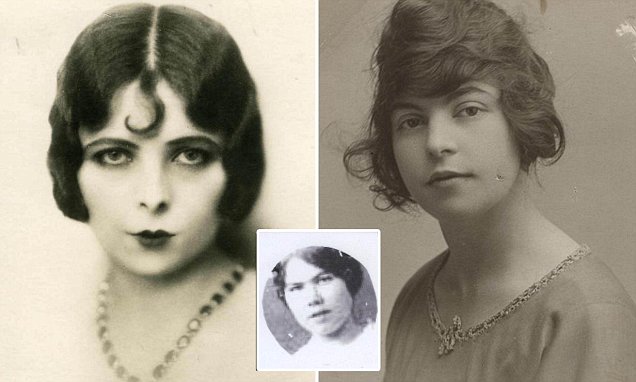The year was 1862, a time when thievery ran rampant in London’s lower class families, when women had little to no rights, and when men held the reins of society. Men ran social, economic, and political structures, but they also ran the underbelly of London. One of the most prominent gangs of London was the Elephant and Castle gang, an all-male gang that ran a complex system of robberies, kidnappings, and murder. At the same time, Mary Carr was born. Carr, born of a poor woman by the name of Jane Carr, and her husband, a notorious international thief and forger of bonds, John Carr, who led a life of crime. By 1881, Carr was already a notorious thief, with convictions starting as early as 1876 at the age of fourteen.1 With the help of the Elephant and Castle Gang, Mary Carr started the Forty Elephants, becoming their first queen due to her infamy for “fencing” or selling stolen property and pulling off successful heists. Though Carr was their first queen, the gang’s first public appearance was in an article from 1873, but some say the all female gang had been around since the 1700’s.2 Carr continued her career, changing her name several times along the way, including to Molly Mayne and Polly Carr. By 1903, she was notorious internationally, with a police report back in 1900 identifying her as the notorious Polly Carr, one of the most dangerous women in the London metropolis and Queen of the Forty Thieves (interchangeable name for Forty Elephants). Carr ran the Forty Thieves on and off between prison sentences until her suspected death in 1924.3 Carr successfully organized the Forty Elephants, but she started something else. She started the idea of a woman becoming a hoister, a person who stole and sold goods. Hoisters were becoming a lifestyle and profession for women who were locked out of the social lime light, but now could show off their skill and wealth. Becoming a hoister also meant breaking the social status of women since, with their new found wealth, they could become independent and support themselves. Unlike thieves and shoplifters, hoisters were known as professionals who were able to evade arrest and carry different aliases. Women who joined the hoister status unfortunately typically joined due to dire economic circumstances, since most shoplifters came from working and middle class families.4

After the death of Mary Carr came another Queen, Alice Diamond. Just like the former Queen, she also carried aliases, including Dolly Blake and Alice Blake.5 Born in Southwark, South London in 1886, Alice, just like Carr before her, was born to criminal parents. By seventeen, Alice already had a criminal record from thievery and was using a false identity even then. By the 1920’s, gangs plagued London and soon Alice’s record, just like Carr’s, got the attention of the Elephant and Castle Gang. Having just lost their previous Queen, the Elephant and Castle Gang eagerly accepted Alice as the next Queen. At 5 foot 8 inches, Alice was formidable and usually wore diamond rings that were used as impromptu brass knuckles during fights. After several fights with police, she was known as Diamond Annie.6 Unlike their counterparts, the Elephant and Castle Gang, Alice continued Carr’s work through the use of organized cells through various parts of London and later across Great Britain.

For women shoppers, most shops offered privacy to them when shopping. Alice, taking full advantage of that privacy, created special clothing for the women that led to the largest systematic shoplifting the country had ever seen. The clothing, lined with specially tailored pockets and multiple layers of cloth to hide goods between knickers, allowed Alice and her gang to launch several highly successful raids on London’s most elegant businesses.7 The creativity and boldness of the clothing ranged from false arms hanging out of long coats to large bags hanging underneath dresses. One nineteen-year-old thief caught in Bayswater, West London, had a bag made of Alpaca fur suspended at her waist that hung all the way down to her knees. When caught, police discovered forty-five stolen items inside.8 Alice ran the gang with precision and excellent timing. If their presence became too well known to police, Alice would order another cell in another city to take on more heists. Along with heists, many of the women would work as housemaids with credentials that usually mentioned other women. These women would ransack the home, or seduce the man into paying them for their silence.9 With the invention of the automobile, getting away became easier for the thieves. Once they pillaged stores or homes, the thieves would use (at the time) high powered automobiles to outrun police. Police documents show that even if the alleged thief was caught, the goods were not located within the vehicle. The reason for that was that the goods had already been relocated to another member of the gang (sometimes a male member) before or even during the escape. The goods would then be taken mostly by train, usually through an empty suitcase. The suitcases would be deposited around railroad stations, which would then be filled with the goods and shipped to “fences.”10 A “fence” was slang for someone who received and sold stolen goods. The goods, worth thousands of pounds, would sometimes end up in the hands of one of the most notorious fences, Ada Macdonald. MacDonald lived in a house in Walworth, South-East London and was the subject of many police raids. Each time, the authorities couldn’t locate any of the stolen goods.11
Just like other gangs at the time, Alice and the Forty Elephants guarded their territory ferociously. If a thief who was not part of their gang stole from a shop on their turf, a percentage was demanded from the thief, by an amount that depended on how much that thief stole. Those who refused were kidnapped, beaten, and subjected to ransoming. Along with demanding respect from other thieves, a list of codes known as the “hoister’s code” applied to all members of the gangs. The codes ranged from “No drinking before a raid, and early hours to bed” to “If a member is arrested others must be willing to provide an allibi.”12 Though the women were vicious, they were known to have an extravagant life. As Alice put it, they would “put on the posh,” meaning that they would dress and act of a higher social status. Combined with acting of a higher status, the Forty Elephants would host lavish parties, spend enormous amounts of money in pubs, clubs, and restaurants, fitting the 1920’s narrative of the aristocratic flapper with Alice at the forefront.13

Most members of the gang, being excellent hoisters, rarely got caught in the act. One notorious member, however, was caught. Her name was Maggie Hughes. In 1923, she had stolen a tray containing thirty-four diamond rings. While running out of the store, she ran straight into the arms of a police officer. On December 20, 1925, Alice’s rule came to an end after she and Hughes incited a riot against a former member of the Forty Elephants. Alice was jailed for eighteen months while Hughes was jailed for five.14

By the time of Alice’s release, another thief by the name of Lillian Rose Kendall had taken over the gang. Seeing how energetic, young, and creative Kendall was, she handed her position over to Kendall. Kendall, nicknamed the “Bobbed Hair Bandit” because of her short fringe and side curls, was a daring driver specializing in smash and grabs. On several occasions, Kendall used her car as a way to smash into store fronts such as Cartier’s on Bond Street.15
After Alice left the gang, their power and influence began to slip away. Hughes, being one of the more brazen of the group, was officially out of the gang by 1938. With Hughes gone and many more powerful members dead or imprisoned, the gang began to wither away.16 By the 1950’s, store security had increased and the ability to hide more items limited, due to change in clothing style, leaving less profit for the gang. By then, most members left to the countryside where smaller businesses were easier targets, but with improving economic conditions, new members were scarce leaving the Forty Elephants all but a romanticized legend. As for Alice, after leaving the gang, she founded a brothel in Lambeth, passing on tips to future shoplifters and members of the Forty Elephants. During WWII, Alice refused to leave London during evacuations. She later contracted Multiple Sclerosis and die at the age of 55 in 1952.17
- Brian McDonald, Alice Diamond and the Forty Elephants: Britain’s First Female Crime syndicate (Berkshire: Milo Books, 2015), 64-65. ↵
- Amelia Hill, “Girl Gang’s grip on London underworld revealed,” The Guardian, December 27, 2010. Accessed March 12, 2018. https://www.theguardian.com/books/2010/dec/27/girl-gang-london-underworld. ↵
- Brian McDonald, Alice Diamond and the Forty Elephants: Britain’s First Female Crime syndicate (Berkshire: Milo Books, 2015), 66, 68-69. ↵
- William M. Meier, “Going on the Hoist: Women, Work, and Shoplifting in London, ca. 1890-1940,” Journal of British Studies 50, No. 2 (April 2011): 411, 427. ↵
- Brian McDonald, Alice Diamond and the Forty Elephants: Britain’s First Female Crime syndicate (Berkshire: Milo Books, 2015), 116. ↵
- Guy Walters, “Hoodlums in bloomers: The female army of shoplifters that ransacked West End shops and hid loot in their knickerbockers,” Daily Mail, January 20, 2011. Accessed March 12, 2018. http://www.dailymail.co.uk/femail/article-1342450/Female-shoplifters-ransacked-West-End-shops-hid-loot-knickerbockers.html. ↵
- Guy Walters, “Hoodlums in bloomers: The female army of shoplifters that ransacked West End shops and hid loot in their knickerbockers,” Daily Mail, January 20, 2011. Accessed March 12, 2018. http://www.dailymail.co.uk/femail/article-1342450/Female-shoplifters-ransacked-West-End-shops-hid-loot-knickerbockers.html. ↵
- Brian McDonald, “Such very seductive shoplifters: Stuffing loot into their bloomers, how a ruthless girl gang spread havoc across London-flirting with victims or battering them with diamond-ring knuckle-dusters,” The Daily Mail, December 18, 2015. Accessed March 12, 2018. http://www.dailymail.co.uk/news/article-3366655/Such-seductive-shoplifters-Stuffing-loot-bloomers-ruthless-girl-gang-spread-havoc-London-flirting-victims-battering-diamond-ring-knuckle-dusters.html. ↵
- Kirsten Miller, “The Ultimate Girl Gang,” Old Police Cells Museum, January 25, 2018. Accessed March 12, 2018. http://www.oldpolicecellsmuseum.org.uk/content/learning/bad-girls/victorian-girl-gangs. ↵
- Kirsten Miller, “The Ultimate Girl Gang,” Old Police Cells Museum, January 25, 2018. Accessed March 12, 2018. http://www.oldpolicecellsmuseum.org.uk/content/learning/bad-girls/victorian-girl-gangs. ↵
- Guy Walters, “Hoodlums in bloomers: The female army of shoplifters that ransacked West End shops and hid loot in their knickerbockers,” Daily Mail, January 20, 2011. Accessed March 12, 2018. http://www.dailymail.co.uk/femail/article-1342450/Female-shoplifters-ransacked-West-End-shops-hid-loot-knickerbockers.html. ↵
- Brian McDonald, Alice Diamond and the Forty Elephants: Britain’s First Female Crime syndicate (Berkshire: Milo Books, 2015), 135. ↵
- Brian McDonald, “Such very seductive shoplifters: Stuffing loot into their bloomers, how a ruthless girl gang spread havoc across London-flirting with victims or battering them with diamond-ring knuckle-dusters,” The Daily Mail, December 18, 2015. Accessed March 12, 2018. http://www.dailymail.co.uk/news/article-3366655/Such-seductive-shoplifters-Stuffing-loot-bloomers-ruthless-girl-gang-spread-havoc-London-flirting-victims-battering-diamond-ring-knuckle-dusters.html. ↵
- Guy Walters, “Hoodlums in bloomers: The female army of shoplifters that ransacked West End shops and hid loot in their knickerbockers,” Daily Mail, January 20, 2011. Accessed March 12, 2018. http://www.dailymail.co.uk/femail/article-1342450/Female-shoplifters-ransacked-West-End-shops-hid-loot-knickerbockers.html. ↵
- Brian McDonald, “Such very seductive shoplifters: Stuffing loot into their bloomers, how a ruthless girl gang spread havoc across London-flirting with victims or battering them with diamond-ring knuckle-dusters,” The Daily Mail, December 18, 2015. Accessed March 12, 2018. http://www.dailymail.co.uk/news/article-3366655/Such-seductive-shoplifters-Stuffing-loot-bloomers-ruthless-girl-gang-spread-havoc-London-flirting-victims-battering-diamond-ring-knuckle-dusters.html. ↵
- Guy Walters, “Hoodlums in bloomers: The female army of shoplifters that ransacked West End shops and hid loot in their knickerbockers,” Daily Mail, January 20, 2011. Accessed March 12, 2018. http://www.dailymail.co.uk/femail/article-1342450/Female-shoplifters-ransacked-West-End-shops-hid-loot-knickerbockers.html. ↵
- Brian McDonald, “Such very seductive shoplifters: Stuffing loot into their bloomers, how a ruthless girl gang spread havoc across London-flirting with victims or battering them with diamond-ring knuckle-dusters,” The Daily Mail, December 18, 2015. Accessed March 12, 2018. http://www.dailymail.co.uk/news/article-3366655/Such-seductive-shoplifters-Stuffing-loot-bloomers-ruthless-girl-gang-spread-havoc-London-flirting-victims-battering-diamond-ring-knuckle-dusters.html. ↵



74 comments
Pamela Callahan
I found this article to be both very interesting and eye-opening. Of all the times I have learned about the 1900s and the gang violence that occurred I have never heard of an all-female gang. After reading this article and discovering women’s motives to join gangs I wonder why I had never considered this earlier. They used their creativity and gang experiences to be seen as equally capable as the men doing the same thing and I believe this helped to elevate their status in society.
Stephanie Silvola
The 1920’s was the decade of lavish parties and flappers. The fashion at the time for women was for the purpose of being conservative, but then seemed to be used as a means to steal. This was an important detail to add as it gave imagery to the article. The Forty Elephants was one of the most notorious gangs that I had known about due to the powerful women who ran the group to be successful. This article informed myself and others that women can have a place in structures that were built primarily for men.
Mia Stahl
I really enjoyed reading this article. Something that really struck me was the way the women would use their sewing skills to create easier ways to steal larger quantities of objects. In this era it was often a necessary skill for women to learn especially in lower class families as way of earning some income as well as creating less of a need to spend money on new clothes or wardrob repairs. In retrospect these women used a skill that society required them to learn and turned it around on society itself to dismantle a blatantly patriarichal system that was set up to keep women in the shadows of men.
Rylie Kieny
I have heard of many gangs through watching “gang land” and other popular tv shows, however I have never heard of a predominately women run one. I know what these women did was wrong but it is interesting to see women band together in order to gain wealth and status during a time in which that was very unusual. It is also interesting how the used the fashion of the time to hide their loots. They were very smart and inventive however their brains could have been put to better use. If women of the time were able to participate in the economy equal to men I do not believe the issue of theft among women would have been so rampant.
Antoinette Johnson
This article, “Who Says a Woman Can’t Be Gangsta? Alice Diamond and The Forty Elephants” is great. Throughout time and even today women have always faced some sort of inequality. Alice Diamond, Mary Carr, Lillian Kendall, and others presented in this article show that women can do as much if not more than men can do even as it relates to crime. This article makes me proud to see that these women stood up for their rights and showed their ability to do work, even if it was criminal. They signal handedly lead the gang, The Forty Elephants. They invaded police, created clothing to hide the items they stole, networked with other gangs, came up with codes, all while hoisting and robbing places with little of them getting caught. This is the true definition of girl power.
Madison Guerra
The article was very interesting and it grabbed my attention at the very beginning and kept it throughout the whole thing. Before reading this i had never heard of this all women gang, but it was very interesting to hear about everything they pulled off and how long the gang was allegedly around for. Despite the fact they were all criminals, they seemed to be a close and empowering group of women, taking into account the era this happened where women generally had no say.
Micaela Cruz
This article kept my attention from beginning to end, there was never a dull moment due to the amount of fascinating information. Back then, it was often the men who played roles as notorious criminals and thieves; however, I believe that whatever men can do, women can do better and these three Queens of the Forty Elephants proved just that. One question that I do have is whatever happened to Lillian Rose Kendall? There was only a short amount of information provided about her, I wish there could have been more. Overall, a very well-written article that I enjoyed very much.
Hannah Wilson
This article was very interesting. I have never heard of a gang with women back in the day. I enjoyed hearing about three of the queens and the different ways that they ran the gang. I also found it different that they focused on Women’s clothing stores because they saw the lack of security. They were obviously clever and daring to have been so successful and ran the gang for so long. Good article.
Iris Henderson
This story wasa entertaining and full of action from beginning to end! Ireally enjoyed learning about one of the first all female gangs, the Forty Thieves aka Forty Elephants. While I am in no way defending the illegalities these women committed, the article makes me wonder if the pressure of patriarchy and the lack of ability fo women to be independent at this time, had something to do with this behavior. Also, before reading this story I was unfamiliar with the term hoister and it seems like a great story line for a movie. If I am not mistaken, my fairy lady was a hoister and prostitute before becoming educated and refined. I will say, although they may have lacked formal education, these women were seem fairly intelligent.
Thomas Fraire
The article is extremely intriguing, I have never known about the Forty Elephants before perusing. I feel like the creator completed an awesome activity of recounting their story, and shows how imaginative these ladies were. I cherish how the creator broadly expounded on the ways the young ladies perpetrated their wrongdoings, and the how hard it was for them to be gotten. Intriguing article.